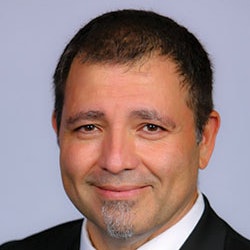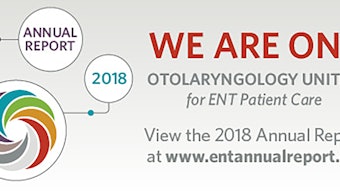What do we do with the spark?
For each of us there was a spark: a memorable patient, a role model, or a personal/family story related to otolaryngology that launched our interest and passion for our specialty. For me this spark was an anatomical oddity, plain and simple. But even with a spark, it took a willing teacher and a supportive resident to fuel and direct my burgeoning interest.
 Albert L. Merati, MD
Albert L. Merati, MD
AAO-HNS/F Past President
For each of us there was a spark: a memorable patient, a role model, or a personal/family story related to otolaryngology that launched our interest and passion for our specialty. For me this spark was an anatomical oddity, plain and simple. But even with a spark, it took a willing teacher and a supportive resident to fuel and direct my burgeoning interest.
I see versions of this “spark” story every year; quite often, otolaryngology applicant personal statements I review recount a powerful experience regarding a family member who struggled with illness. In others, contact with a memorable patient triggers a student’s interest in otolaryngology. For me, the spark was learning that some fibers of the amazing vagus nerve were carried out of the brainstem, barreled down the neck, only to loop around the aorta before heading back to the larynx. That was it. Like the RLN itself, I was hooked!
For me, there is a lesson not just in that there was a spark that day, but how that spark was fanned and grew to a passion for our field.
With my curiosity about the RLN and the larynx in general, I asked one of my anatomy professors if I could serve as a head and neck anatomy teaching assistant for the next year’s class. No one asked me or suggested it—I merely raised my hand to follow my passion. Daniel Graney, MD,* informed me that while they didn’t have this option established, he saw my great interest and was willing to look into it. Dr. Graney pursued my special request and found a way through the paperwork to make it happen. In 1989, I was TA to first-year students in head and neck anatomy, the first of a series of students (and future otolaryngologists) in this role at the University of Washington.
Soon after, while on my otolaryngology rotation as a 4th year medical student, my interest in all things laryngeal was obvious. My chief resident at the University of Washington was Timothy M. McCulloch, MD (now Chair of of the Division of Otolaryngology at the University of Wisconsin School of Medicine and Public Health). Dr. McCulloch spotted something on the schedule that might appeal to me—a type one thyroplasty. “You should really see that case,” he said to me. I went into that OR and scrubbed in with Paul W. Flint, MD, and Charles W. Cummings, MD, as they operated on a young woman with vocal fold paralysis. I will never forget that moment when the implant went in and her voice magically returned. Again, I had the passion, but it took the right person in the right place to direct me and support me in pursuing my spark.
Despite all the practice challenges and unwanted changes that take some of the fun out of what we do every day, I know that our AAO-HNS members remain passionate about our field. I know our members are already active in supporting the sparks that they encounter in their communities. Whether you are in a small town or big city, solo or group practice, you name it: All members serve as ambassadors and guides to support the sparks that occur all around us.
In 2019, AAO-HNS/F will launch an initiative to provide a framework for all its members to make contact with students of all ages. This includes experiences for preclinical medical students, college students, and even high school students. The AAO-HNS is collaborating with its individual members, otolaryngology training programs, and our grassroots leaders through the Board of Governors to offer, organize, and support local student interest days, attendance at our meetings, and observerships. Stay tuned to the Bulletin and OTO News for more information.
For now, tell me your “spark” story. Send it in to me by email—I’d like to share some of these with the rest of the membership throughout this year. As these participatory programs roll out, please join me in sharing this enthusiasm for otolaryngology with the next generation—raise your hand and get involved. And for that part of our community whose spark as been lost or muted under charts and regulations and “peer-to-peer” authorizations, perhaps these new student initiatives will help us reignite our spark once again.
“What was your spark?” Send me your story at Bulletin@entnet.org.
* Dr. Graney won the teaching award so many times that he was eventually given the title of University of Washington School of Medicine Teacher Superior In Perpetuity








